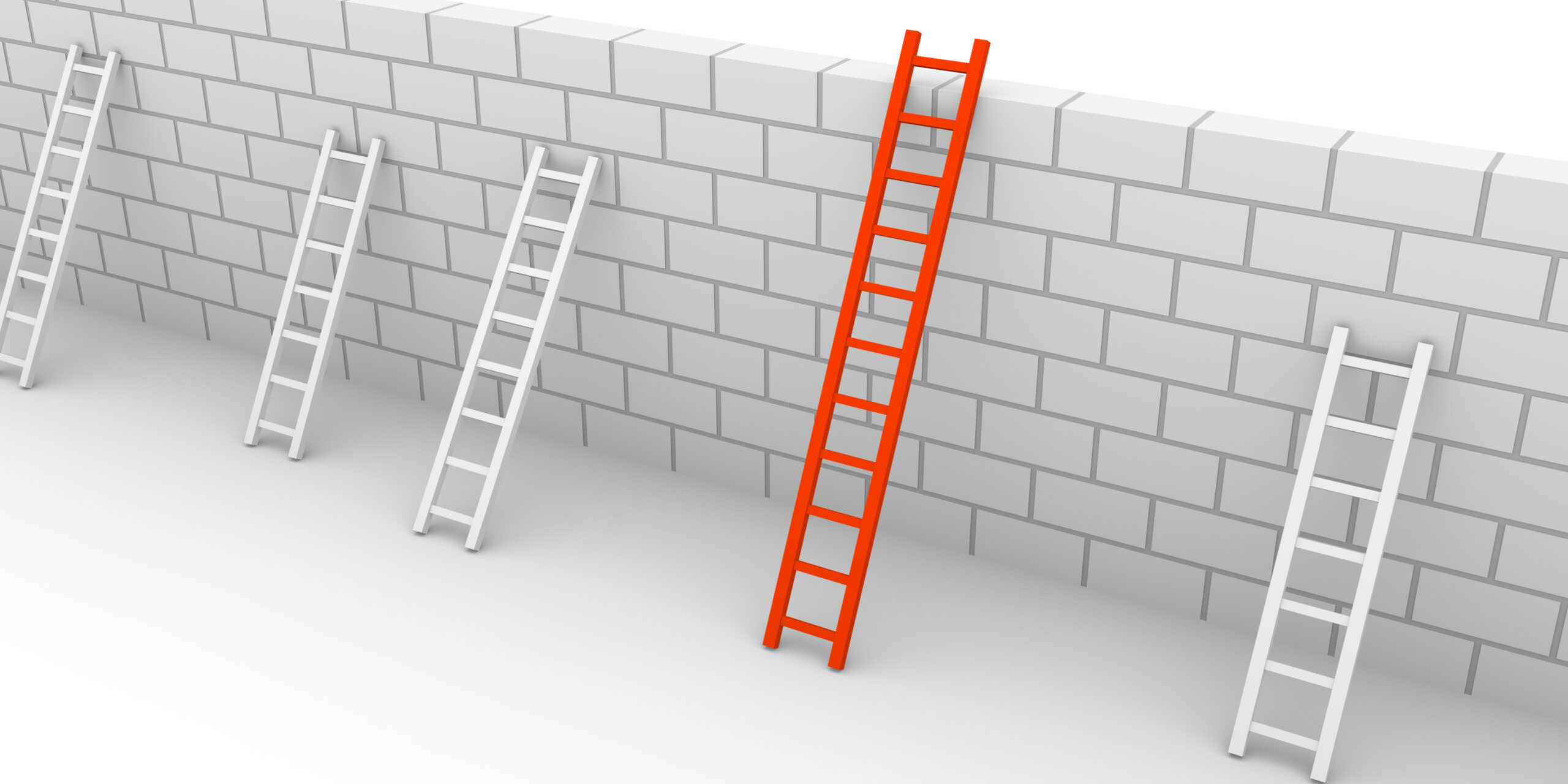
Lean strategy means learning what to improve
FEATURE – Strategy means choosing what needs to be improved, what critical skills must be developed to solve a specific problem – whether it’s a quality defect or a pandemic – and lean is the way to do it.
Words: Michael Ballé and Eivind Reke
Humans have been designing strategies to deal with overwhelming problems since the dawn of time. From the strategies used by ancient Greek generals to defeat larger enemies (using hoplites in a tight phalanx) to those used to build cathedrals (proportion and symmetries, ratios to design geometries and calculate the intensity of the load of stone), store food, build nations and, why not, fight diseases.
The dictionary definition of a strategy is “a plan of action designed to achieve a long-term or overall aim”. We find this rather misleading, in that it makes it seem as if we can look calmly at the situation on paper, devise the best way to reach the goal (usually, beat the enemy, gravity, an epidemic, climate change, etc.) and then… just go out and do it.
Alas, thinking doesn’t work that way. People look at situations through the prism of the problems they habitually solve and the opportunities they habitually pursue. Innovative strategies are outgrowths of what people already know how to do, which they then bend to a new purpose or apply with serendipity to a new situation. You invent from what you know, and then push it beyond that.
This view of strategy flies in the face of Michael Porter’s traditional notion of strategic positioning, which is all about finding that niche to exploit and assumes that operational and technological best practices can be bought and implemented with ease by anyone, like a commodity. Instead of competing on customer focus, adaptability, efficiency, or resilience, Porter’s view on strategy is about escaping competition and seeking monopoly gains or economic rent, something big tech have been able to do successfully in large part due to a lack of political oversight. However, most organizations do not have the clout, nor the opportunity to achieve and maintain a monopoly position.
Real-life strategies emerge by developing something you already master in a novel way to meet the demands of a new situation. Innovative products don’t appear from thin air: they are the result of the iterative repurposing of known techniques used in a never-seen-before way. Let’s use an example close to home: the hybrid fuel-electric technology Toyota used to develop the Prius was known to all automakers, but Toyota pushed it further to disrupt the auto market. Tesla’s battery technology is known to all competitors, but Elon Musk is using it in new ways to create a full electric auto brand.
Successful strategies are not about deciding the right thing to do but about choosing the right competency to improve. We are seeing this in front of our very eyes, with the Covid-19 pandemic. All countries have access to the same information but are choosing a different approach to tackling the problem. Some, like China and other Asian nations have chosen to get better at identifying and isolating carriers. Others are looking for more effective lockdowns. Others rely on greater hygiene in the population. Others yet, bank on the faster-than-ever development of a vaccine. Everyone tries a bit of everything, but the focus on what to do better explains the shape of the overall strategy.
Indeed, we learn from improving, not from just doing. Athletes will never become great or musicians become virtuosos if they’re asked to perform mind-numbing, repeated exercises without the clear aim to get better at something. Improvement is what motivates us. Progress is what keeps us going. Setbacks require resilience or a change of tack. We want to get better at stuff, not just sustain habits.
LEAN AS A STRATEGY
Lean is a strategic scaffolding to discover what we need to get better at. It doesn’t tell you which techniques you will have to improve, but how to discover them. In doing so, it gives you a strong place to start:
- Begin by improving customer satisfaction: go to the customer service center and find out what customers mostly complain about. Then wonder why your current process doesn’t deliver what customers need – what the weak skill in your way of doing things is that creates this issue. If you commit to get better at it, you will improve your position to market and discover how customer needs and tastes are changing. That is, how value is evolving.
- Then improve your lead-times: go to the shipping department and look at inventories. Why are they there? Look at component inventories. Why so many? Reducing lead-times of any operation will immediately reveal its lack of flexibility, which is built into the process because there are some things we simply don’t know how to do (like handling logistics, getting the right people to work at the right time, finding the right supplies, and so on). Building flexibility is critical to your strategy, as it builds up the skills you need to reconfigure when demand changes.
- Improve your ability to detect defects and react on the spot: at any workstation, ask yourself: are defects being detected by the customer? Are they being detected at final inspection? At the end of the process? Within the machine? How long does it take to react and fix them? The ability to spot deviances as they occur is the key to seeing problems in context and discovering what is really happening, and so learning more deeply about technical processes.
- Improve your ability to engage people in learning-by-improving: creating a culture of learning depends on four core competences: 1) leveled workloads so people have space to learn while they work; 2) training on standards so they feel confident about knowing what they should know; 3) problem-solving to develop their autonomy in dealing with out-of-standard situations; and 4) small-step improvement so they learn to push the envelope and think reflexively and creatively.
- Improve your underlying systems: the ability to constantly challenge, upgrade or change the systems that support the work and that enable people to do what they need to do.
These five generic improvement goals are not the strategy as such, but the method to discover that strategy. As you practice them patiently and relentlessly, a new set of problems and opportunities will appear that will help you to figure out what you need to get better at in order to face up to the challenge you’re facing.
Strategic thinking goes as far back as 2,500 years ago, with the writings of Sun Tzu. Over the millennia, it’s attempted to answer the same question: how can humans achieve a goal together in the face of adverse conditions? Strategic thinking isn’t much help in known situations, when problems are well understood and solutions well known. In these cases, applying “best practices” is a tactical response. Strategic thinking is about facing the unknown, dealing with uncertainty, change, adversity.
Value is relative to a context. We value what we need at a specific point in time. Indeed, what customers want changes as their social and material context changes – new needs, new tastes, new wants. External change is always faster than our own ability to change our processes. To start with, every season, some products of our existing line-up will sell faster than others, which requires re-aligning the supply chains. But then customers will seek new products or services we don’t even know how to provide yet. Flexibility is about mix, volume and novelty. Being agile on markets requires flexibility, which in turn rests on the know-how to be flexible. That’s why strategic focus is about choosing what we need to improve.
Lean strategy is about discovering what we need to do better and learning to do so by improving what we currently do, going beyond it and finding new outlets. It rests on constant practice of understanding what the problem really is, creating a culture of problem solving by training people in kaizen, and pushing ourselves to reinvest gains into new developments.
A successful strategy is about improving the right things. Lean is the method to discover what these are and lead all to improve together, thus creating the capabilities as we go that will enable us to progress and succeed.
THE AUTHORS


Read more


FEATURE – Leading by solving problems is a key trait of any lean leader, but it is important to understand that not all problems are their prerogative.


FEATURE – Ahead of their exclusive webinar next week, the authors outline some of the problems Ukrainian companies are facing as the Russian invasion continues.


FEATURE – Kanban is the best-known method to establish pull production, but it is not the only one. Here’s a few other ways you can create a pull system.


PROFILE – The leader we profile today has a holistic view of the digital world. He brought Agile to Australia, and after embracing lean thinking he has helped to make REA Group one of the country's best digital brands.

